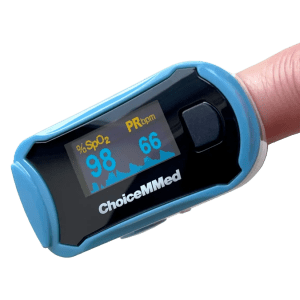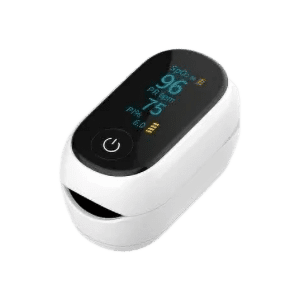A pulse oximeter is a small, non-invasive medical device that plays a crucial role in monitoring an individual’s oxygen saturation level and pulse rate. These devices have become increasingly important, not just in clinical settings but also for home health monitoring, providing valuable insights into one’s respiratory and cardiovascular health.
Understanding Oxygen Saturation and Pulse Rate
Before delving into the mechanics of a pulse oximeter, it’s essential to understand what oxygen saturation and pulse rate mean. Oxygen saturation, or SpO2, indicates the percentage of hemoglobin in the bloodstream that is saturated with oxygen. A healthy individual typically has an oxygen saturation level of 95% to 100%. Pulse rate, on the other hand, measures the number of heartbeats per minute, providing insights into heart health.
How Does a Pulse Oximeter Work?
Pulse oximeters operate based on a simple yet fascinating principle. When you clip the device onto a body part, usually a fingertip or earlobe, it emits light sources from two LEDs – one red and one infrared. Hemoglobin absorbs light differently depending on its oxygenation level; oxygenated hemoglobin absorbs more infrared light, whereas deoxygenated hemoglobin absorbs more red light. The device calculates the ratio of the two lights to determine the oxygen saturation level in the blood.
This technology allows the pulse oximeter to provide two critical pieces of information: the oxygen saturation level (SpO2) and the pulse rate. These readings are displayed on the device’s screen, usually within a few seconds, making it a quick and efficient tool for monitoring respiratory and cardiovascular health.
The Importance of Monitoring with a Pulse Oximeter
Monitoring oxygen saturation and pulse rate is vital for individuals with respiratory or cardiovascular conditions, such as COPD, asthma, or heart disease. It can also be crucial for athletes, people recovering from COVID-19, or anyone interested in maintaining optimal health. A drop in oxygen saturation levels can be an early warning sign of a health issue, necessitating prompt medical attention.
Choosing the Right Pulse Oximeter
When selecting a pulse oximeter for home use, it’s important to consider factors such as accuracy, ease of use, and reliability. The device should provide quick and accurate readings, be easy to read, and fit comfortably on the finger.
Conclusion
A pulse oximeter is a vital tool for anyone looking to keep a close eye on their respiratory and cardiovascular health. Its simplicity, coupled with the critical data it provides, makes it an indispensable device for both health professionals and individuals alike.
Explore our range of high-quality pulse oximeters to find the perfect device for your needs. Whether you’re a healthcare professional, an athlete, or simply someone keen on monitoring your health, we have the right pulse oximeter for you.
Home Pulse Oximeter Range
Choosing the right pulse oximeter can help you stay informed about your health and make timely decisions for your well-being. Visit our product pages to learn more about each option and select the one that best fits your health monitoring needs.


